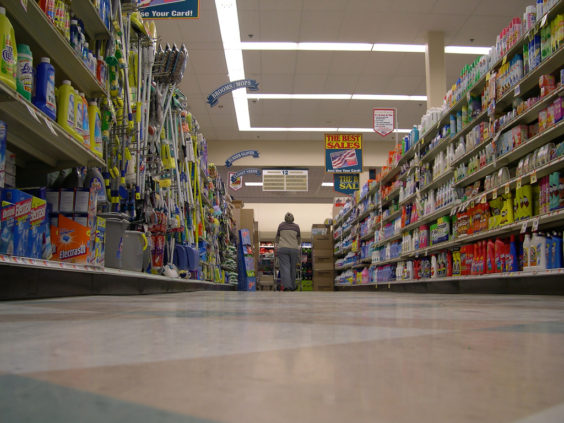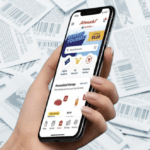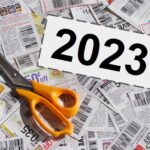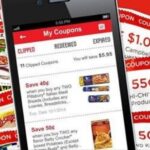
Do you travel up and down every grocery aisle during each shopping trip, or make a beeline for only the items that are on your shopping list? If you’re a couponer, chances are you go to the grocery store with a plan, and stick with it. But researchers are studying some sneaky ways to throw us off our game, using coupons to send us wandering around the store in search of deals.
Marketers have long known that the more time they can get you to spend in a store, and the more aisles they can get you to visit, the more money you’re likely to spend. There’s a reason the milk is way in the back of the supermarket, after all – so you’ll have to pass by all those other potentially tempting purchases on the way there.
Now, researchers have found that the targeted use of mobile coupons can transform us from savvy shoppers, to lab rats in a maze – zigzagging around the store to sniff out a tempting deal, while taking nibbles of other items along the way.
In a recent study published in the Journal of Marketing, four university marketing researchers found that sending shoppers mobile coupons for items that are far from where they are, can “significantly increase unplanned spending.”
The study took place in an unnamed Pittsburgh grocery store. 90 shoppers who participated were asked in advance for their grocery lists, which the researchers used to make a map of each shopper’s likely route through the store. The shoppers then were offered coupons – some for items that were along their planned route, others for items that required them to visit a part of the store they otherwise wouldn’t have. The idea was to simulate mobile coupons, that can be offered depending on what a shopper is buying and where they are in the store.
The researchers found that those who were given a coupon for an item along their planned route, ended up spending an average of $13.83 more than they had planned. Those who had to go out of their way to use their coupon, spent a whopping $21.29 more. And most of that additional spending wasn’t even on the specific deal that was offered – it was on other items that the shoppers happened to see during their unanticipated travels through the store. In all, the study concluded, using mobile coupons to encourage shoppers to spend more time in the store, and buy things they didn’t know they needed, increased “unplanned spending” by 16.1%.
Location-specific mobile couponing is still in its infancy. Stop & Shop’s “Scan It!” app is one of the few, so far, that offers targeted coupons based on a shopper’s location in the store and purchase history. Walmart is planning to offer more traditional digital coupons with “Scan and Go”, though its app does have the technology to be able to offer more targeted coupons in the future (read: “Walmart Plans to Introduce Digital Coupons”).
But most such offers take customer convenience into account. If you’re buying peanut butter, for example, you might be offered a coupon for jelly as long as you’re in that aisle. The new research, though, turns that concept on its head. Customer convenience be darned – the real money is in sending you coupons for things that will make you roam around trying to find them.
Typically, the study says, shoppers cover less than half of the total area in a grocery store. That means a lot of items that a grocery store sells, we just never see. Many of us prefer it that way – all the better to protect us from impulse buys. Then again, sometimes you need to see something to remember that you need it. If you never go down the health and beauty aisle, will you ever remember that you’re running low on floss?
And it’s not just mobile coupons that could get us to visit more of our stores. The study also suggests that the lessons learned could apply to other types of coupons as well. How often have you seen a blinkie machine full of coupons, right in front of the product the coupons are meant for? The researchers suggest that maybe those machines should offer coupons for products that are in another part of the store altogether. Similarly, personalized offers tied to a shopper’s loyalty card could be used to “predict which products are most likely to be unplanned on the current trip, and offering a targeted promotion for an unplanned product in a seldom-visited part of the store.” The study even suggests that switching things up, keeping shoppers on their toes by moving products around to different locations every so often, could increase the time spent and distance travelled in stores.
But coupons that send us on a wild goose chase for deals down unfamiliar aisles, could ultimately end up being counterproductive. “Forcing shoppers to roam all over the store,” the study concludes, is a strategy that “risks irritating shoppers.” Despite marketers’ best efforts, any good couponer knows that coupons aren’t really saving you money – if they end up making you spend more.
















Grrr. Unscientific studies annoy me.
As much as I agree that this could be true-I am required to doubt their numbers ($21.29?) because there was no control group or even any comparison to paper or other coupon/shopping methods.
Also-did the “researchers” repeat the test w/ the same ‘rats’? There may be a learning curve here. Its takes few a few times to learn a new game; how about you?
P.S. If I had a penny for ever time I had “unplanned spending”, I could afford to hire a personal shopper to make my “unplanned” spendong for me.